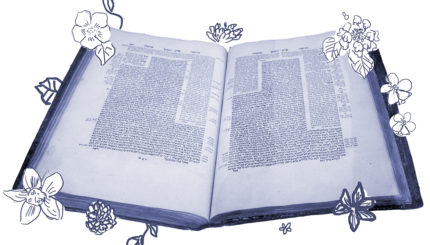Reprinted with permission from A Time for Healing: American Jewry Since World War II (Johns Hopkins University Press).
The most important aspect of the postwar mobility of America’s Jews was their relocation to the suburbs and their movement into the middle class. While mirroring national currents, these demographic trends were more intense among Jews. Historian Arthur Hertzberg estimated that, in the two decades between 1945 and 1965, one out of every three Jews left the big cities for the suburbs, a rate higher than that of other Americans. Jews tended to cluster together in suburbia, but some brave pioneers moved into suburbs that contained few if any Jews. 
One of the first analyses of the impact of suburbanization on Jews was Albert I. Gordon’s 1959 book Jews in Suburbia, which concerned Newton, Massachusetts. Gordon had a Ph.D. degree in anthropology from the University of Minnesota. More important, he was the rabbi of Temple Emanuel in Newton, an exclusive suburb of Boston, which had a large and growing Jewish population by 1959. The nickname of Newton was “the garden city.” Old-timers claimed this was because of its many parks and flower beds. Others claimed it was because there was a Rosenbloom on every corner.
Why They Moved
There were many reasons for the explosive growth of suburbia after 1945. They included the increased use of automobiles, postwar prosperity, the pent-up demand for housing created by the depression and the war, the desire of veterans to resume a normal family life after the dislocations of wartime, the baby boom of the late 1940s and 1950s, government programs that encouraged the building and purchase of houses by veterans, and the postwar cult of domesticity that defined women’s highest calling as mother and wife. The ability to deduct local property taxes and interest payments on mortgages from one’s income in computing federal income taxes made suburban homes more affordable.
The postwar housing boom was concentrated in suburbia. Pre-World War II suburbs increased in population, while new suburbs were created from scratch on tracts of land that had been woods, desert, and marsh. The great pioneer in this postwar suburban housing boom was Jewish builder William L. Levitt. By using the techniques of mass production that he had developed in constructing bases for the military during the war, Levitt built tens of thousands of affordable homes for families eager for a taste of the American dream after the deprivations of the 1930s and the war years.
By 1960, a plurality of Americans were living in suburbia, and demographers were predicting that by the 1990s a majority of Americans would be suburbanites. This mass exodus to what one historian called the “crab-grass frontier” took many students of American and Jewish demography by surprise. Coming mostly from cities or small towns, demographers were unable to appreciate the appeal of the new suburban lifestyle, which combined the convenience of living close to the economic and cultural opportunities of the city with the opportunity of participating in an ersatz rural life of “country wagons,” picture windows, mini-gardens in the backyard, and weekend barbecues…..
Jewish Identity in Suburbia
The problems of postwar American Jewry were of suburbia. The diffusion of Jewish population into the suburbs and exurbs diluted Jewish identity. In the compacted Jewish neighborhoods of the cities, Jewish identity was absorbed through osmosis. In suburbia, it had to be nurtured. Jewish suburbanites lived in localities where, in contrast to the city, most of the people were not Jews, the local store did not sell Jewish newspapers, there were no kosher butchers, synagogues were not numerous, and corned beef sandwiches were not readily available.
The Jewish identity of suburbanites was both weaker and narrower than in the cities. Here there were no bitter quarrels between the religious and the secularists, Yiddishists and Hebraists, Communists and Socialists, and Zionists and Bundists. Pessimists feared that suburbia would be a graveyard for Jewishness. In his religious apologia This Is My God (1959), Herman Wouk painted the prospect of Jewish oblivion in American suburbia. It was “the threat of pleasantly vanishing down a broad highway at the wheel of a high-powered station wagon, with the golf clubs piled in the back.” Mr. Abramson, our golfer, had not disappeared. “When his amnesia clears, he will be Mr. Adamson, and his wife and children will join him, and all will be well. But the Jewish question will be over in the United States.”
The situation, however, was not as bleak as Wouk imagined. The most important and surprising fact about suburban Jews was how many wished to continue identifying as Jews. This was demonstrated by the fact that the first generation of suburban Jews tended to congregate together. Some suburbs — such as Silver Spring outside of Washington and Great Neck and Scarsdale outside of New York City — had large Jewish communities, while neighboring suburbs had relatively few Jews. Suburban social life was divided along religious lines. While anti-Semitism was generally not a problem in suburbia, Jews and Gentiles socialized within their own group. Sociologists referred to the “five o’clock shadow” to mark the separation of Jews and Gentiles in their own social worlds once the workday had ended. Suburban Jews, despite their cultural assimilation, felt more comfortable among fellow Jews.
By far the most common expression of Jewishness in suburbia was membership in a synagogue. Suburban Jews might not believe in God, as Albert I. Gordon noted, but they believed in God’s people and wanted to be part of it. The easiest and most popular way of doing this was by joining a synagogue. One survey of a suburban Los Angeles congregation revealed that less than two percent of the respondents said they had joined because they were religious. Synagogues benefited almost by default from the lack of rival forms of Jewish identity in suburbia.
kosher
Pronounced: KOH-sher, Origin: Hebrew, adhering to kashrut, the traditional Jewish dietary laws.


